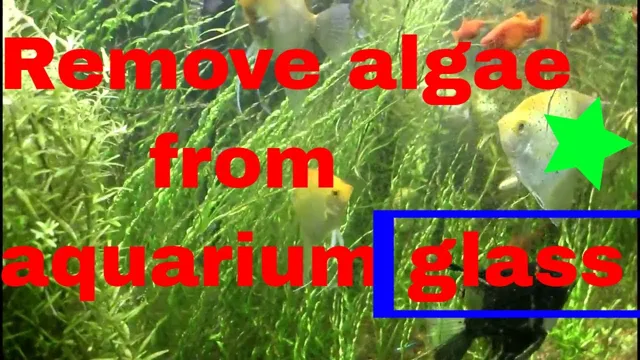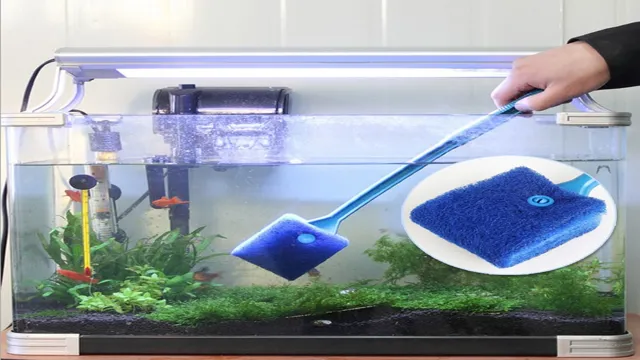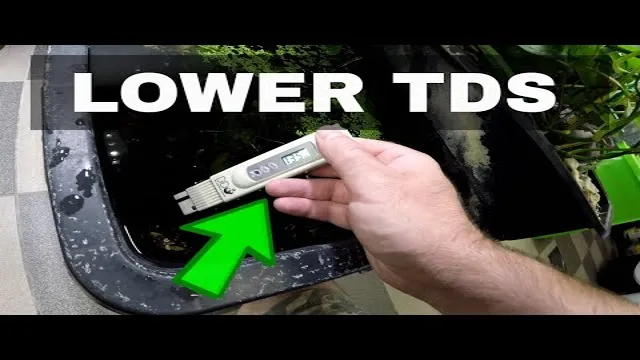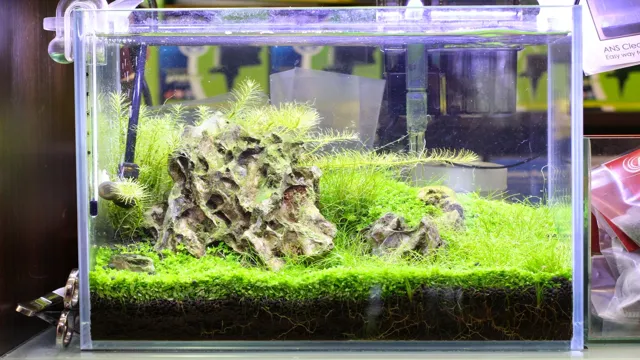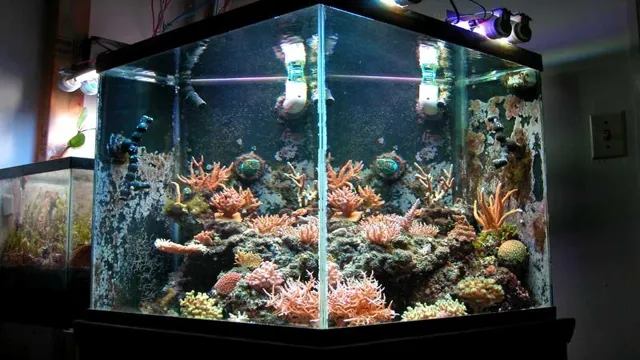How to Clean Aquarium Sump: A Step-by-Step Guide for a Clear and Healthy Fish Tank
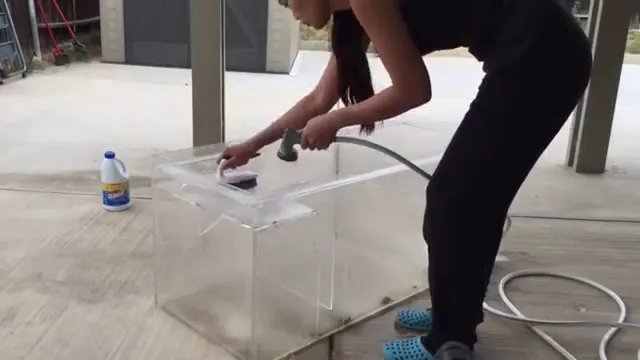
Do you have an aquarium at home? Do you love watching your fish swim around in a healthy environment? If the answer is yes, then you know how important it is to maintain a clean and healthy habitat for your aquatic pets. One important aspect of aquarium maintenance is cleaning your aquarium sump. The sump is essentially the heart of your aquarium’s filtration system, and it’s crucial to keep it clean to ensure your aquatic pets remain healthy and happy.
In this blog post, we’ll discuss the importance of cleaning your aquarium sump, how often you should do it, and tips on how to do it effectively. So, let’s dive in!
What is an Aquarium Sump?
Cleaning an aquarium sump is an essential part of maintaining a healthy aquatic environment for your fish. An aquarium sump is essentially a filtration system that works by cycling water through different compartments, each with its own purpose. The sump typically contains mechanical, biological and chemical filtration media such as filter pads, bio-balls, and activated carbon.
To clean the sump, firstly turn off the pumps and lights, and unplug the electrical connections. Next, remove the water and debris, and dispose of any old filter media. Use a gentle brush to clean the compartments and pipes, then rinse and replace any new filtration media.
Finally, fill the sump back up with fresh water and plug the electrical connections back in. Regular cleaning of your aquarium sump will not only improve the water quality but also keep your fish healthy and happy. Don’t forget to rinse the pump as well and remember, a clean sump equals a healthy aquarium!
Definition and Purpose
An aquarium sump is a piece of equipment that is essential for maintaining a healthy and clean aquatic environment. It’s mainly a filtration system that acts as a “sump” or reservoir to hold excess water from the tank and supply a steady stream of filtered water back into the aquarium. The sump is usually located beneath the aquarium, and it’s connected to the main tank through a series of pipes and pumps.
Its purpose is to remove any debris, uneaten food, and harmful substances from the water, such as ammonia and nitrites that can be toxic to fish and other aquatic life. With the sump’s help, the harmful substances are removed from the water, ensuring cleaner and safer water for the aquarium inhabitants. The presence of a sump in an aquarium system also helps in regulating temperature and water volume, which is crucial for the well-being of the aquatic creatures.
With proper maintenance of the aquarium sump, a beneficial bacterial colony will grow that will further help in keeping the water quality high. Overall, an aquarium sump is an essential component of any aquarium system that provides added filtration, stability, and improved water quality.
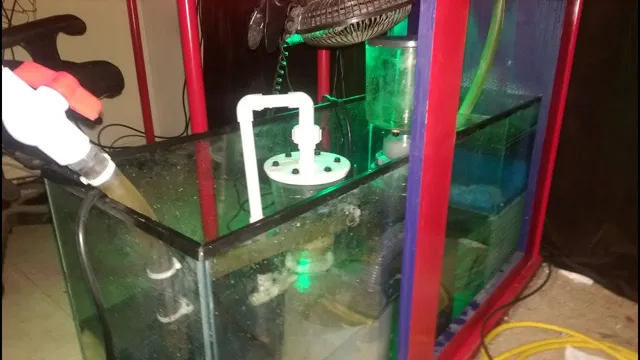
When to Clean Your Aquarium Sump?
Cleaning your aquarium sump regularly is important to maintain the overall health and cleanliness of your aquatic environment. The frequency of cleaning your sump depends on the size of your aquarium and the amount of debris that accumulates in the sump. As a general rule of thumb, it is recommended to clean your sump every 4-6 weeks.
However, if you have a larger aquarium with a significant amount of bio-load or if you notice an increase in debris in the sump, you may need to clean it more frequently. It’s crucial to keep in mind that neglecting the cleaning of your sump can lead to poor water quality, algae growth, and potential harm to your fish. When cleaning your aquarium sump, be sure to turn off all equipment, remove any loose debris or foreign objects, and use a sump-specific cleaner or vinegar solution to clean the surfaces.
By regularly cleaning your aquarium sump, you can ensure that your aquatic environment stays healthy and thriving for your aquatic pets.
Signs to Look For
As aquarium enthusiasts, we all know the importance of keeping our tank environment clean and healthy for our aquatic friends. However, sometimes we forget about the hidden parts of our aquarium system, like the sump. A sump is a vital part of the filtration process, but it can get dirty and clogged with debris over time.
So, how do you know when it’s time to clean your aquarium sump? There are a few signs to look out for, such as reduced water flow, a foul smell, or an increase in nitrate levels. If you notice any of these signs, it’s time to roll up your sleeves and dive into the sump. Regular cleaning of your aquarium sump ensures that your filtration system is running smoothly, and your aquarium is a happy and healthy home for your fish and other aquatic critters.
Preparing to Clean Your Aquarium Sump
When it comes to maintaining a healthy and clean aquarium, cleaning the aquarium sump is an essential task that should be done regularly. To prepare for cleaning your aquarium sump, the first step is to gather all the necessary tools and equipment. This includes protective gloves, a bucket, a siphon, a scrub brush, and a cleaning agent that is safe for aquarium use.
It is also important to turn off all electrical equipment connected to the sump, including pumps and heaters. Once you have all the necessary tools ready, you can begin the cleaning process by removing any debris or detritus that has accumulated in the sump. Be sure to siphon out any excess water and scrub away any buildup, being careful not to damage any components or surfaces.
As you clean, inspect the sump for any signs of wear and tear and repair or replace any damaged or broken parts. Regularly cleaning your aquarium sump will help ensure a clean and healthy environment for your aquatic pets, allowing them to thrive and flourish.
Gathering Supplies
One of the most crucial steps in cleaning your aquarium sump is gathering all the supplies needed to do the job correctly. First and foremost, you will need to ensure that you have a large enough container to hold all the water and equipment from your sump. A five-gallon bucket should suffice for most home aquariums.
Next, you will need a sump brush to remove any debris buildup on the walls of your sump. Additionally, a gravel vacuum can help clean any areas that the brush cannot reach. You will also need a pair of gloves to protect your hands and prevent the introduction of any chemicals, soaps, or oils into the aquarium environment.
Finally, have some towels handy to sop up any spills or drips that may occur during the cleaning process. Remember, having all your supplies ready before starting the sump cleaning process will save you time and ensure a successful and thorough cleaning job.
Turning off Equipment
Turning off your aquarium equipment before cleaning your sump can prevent any accidents from happening. It is essential to unplug all electrical devices, including lights, heaters, filters, skimmers, and pumps, to ensure their safety. Additionally, turn off any automatic feeders, dosers, or any other equipment that is connected to the electrical outlet.
It’s best if you have a power strip with an on/off switch, which allows you to turn off everything at once. Doing so reduces the chances of forgetting any equipment that may be accidentally left plugged in, which poses a significant risk. Moreover, unplugging your equipment protects you and your aquatic pets, enabling you to perform a thorough cleaning of your aquarium’s sump without causing any damage or harm.
Step-by-Step Guide to Cleaning Your Aquarium Sump
Keeping your aquarium sump clean is essential for maintaining a healthy environment for your fish and other aquatic life. Regular cleaning will prevent excess buildup of waste and debris, which can harm your aquarium inhabitants and lead to poor water quality. To ensure that your sump is functioning at its best, follow these simple steps to clean it thoroughly.
First, turn off your aquarium pumps and any other equipment connected to the sump. Next, remove the sump and drain any water into a designated container. Rinse the sump with warm water and use a scrub brush or sponge to remove any dirt or grime.
Then, soak the sump in a mixture of warm water and white vinegar for about 30 minutes to disinfect and kill any bacteria. Rinse the sump thoroughly with clean water and let it air dry before reassembling and reconnecting all equipment. Remember to regularly clean your sump to keep your aquarium healthy and thriving.
Removing Water and Debris
Cleaning your aquarium sump is an essential task for maintaining a healthy and thriving aquatic ecosystem. One of the crucial steps in this process is removing water and debris from your sump. First, turn off all power to your aquarium equipment and then unplug your sump pump.
Next, remove any excess water from the sump using a bucket or siphon hose. Once the water is removed, use a clean cloth or sponge to wipe down the walls and surfaces of the sump to remove any accumulated debris or slime. This will ensure that your sump is clear of any harmful buildup or residue that can negatively impact the water quality.
By routinely cleaning your sump and keeping it free of debris, you can promote optimal filtration and provide a healthy living environment for your aquatic pets.
Cleaning Components
Cleaning your aquarium sump is a crucial part of maintaining a healthy aquatic environment for your fish and other marine life. It’s essential to perform this task regularly to prevent waste buildup and ensure proper filtration. Here’s a step-by-step guide on how to go about it.
The first step is to turn off all the equipment connected to the sump. This includes pumps, skimmers, and heaters. Next, drain all the water from the sump and remove any debris that has accumulated.
Once all the waste is removed, take a sponge or brush and scrub down the sump walls and any components inside. Rinse thoroughly with clean water and let it dry before refilling with water and turning equipment back on. Remember to repeat this process every few weeks to keep your sump in tip-top condition.
With a little effort, you can ensure a healthy and thriving marine ecosystem for your aquatic pets.
Reassembling Your Sump
If you’ve been following along with our step-by-step guide to cleaning your aquarium sump, the next step is to reassemble it. This may seem daunting if you’re not a seasoned hobbyist, but rest assured it’s not too complicated. Start by reattaching the pump to the return line and securing it in place with hose clamps.
Then, reattach any additional equipment, such as protein skimmers or heaters. Make sure everything is properly seated and secure before moving on. Next, it’s time to add your filter media back into the sump.
This can include things like filter socks, bio balls, or ceramic rings. Be sure to follow any manufacturer instructions for placement and replacement of these items. Finally, you’ll want to double-check all connections and seals to make sure everything is tight and leak-free.
Don’t forget to top off your sump with fresh, clean water, and turn your equipment back on. Overall, reassembling your sump can be a bit time-consuming, but it’s definitely worth it to ensure the health and happiness of your aquatic pets. With a little patience and attention to detail, you’ll have your sump up and running again in no time.
Happy aquarium keeping!
Regular Maintenance Tips to Keep Your Sump Clean
Keeping your aquarium sump clean is essential for the well-being of your aquatic pets. Regular maintenance is the best way to ensure that your sump stays clean and functional. Begin by turning off pumps and lighting before removing any debris or waste.
Use a scraper or brush to remove debris from the walls of the sump and pour out any accumulated water. Rinse the sump with fresh water until it is completely clean. You can also use a specialized sump cleaner solution if necessary.
Replace any worn or damaged parts, like the filter media or pumps, to keep your sump working efficiently. With these regular maintenance tips, you can enjoy a clean and healthy environment for your aquatic friends. Don’t forget to clean your aquarium sump regularly to keep it looking its best!
Water Changes
Regular water changes in your sump can help keep it clean and operating at its best. It’s important to change out a portion of the water on a regular basis to remove excess nutrients and waste products. Depending on the size of your sump, you may want to do this every one to two weeks.
To make the process easier, consider using a pump or a siphon to remove the water. Be sure to replace it with fresh, dechlorinated water to maintain the proper water quality. Regular water changes can also help prevent the buildup of harmful chemicals and algae.
By taking the time to perform this simple maintenance task, you can help ensure a healthy, thriving aquarium.
Checking Components
Regular maintenance is key to keeping your sump clean and functioning properly. One of the most important things you can do is check your sump’s components regularly. This includes the pump, float switch, and discharge line.
Inspect the pump for any signs of wear or damage, such as rust or corrosion. Check that the float switch is working correctly and is not obstructed by any debris. Ensure that the discharge line is clear of any blockages and is properly connected.
Regularly checking these components can prevent costly repairs and ensure that your sump is working efficiently. By keeping up with maintenance, you can save yourself money and avoid any potential issues down the line.
Rinsing Mechanical Filters
Regular mechanical filter maintenance is a crucial part of keeping your aquarium sump clean and running efficiently. One essential aspect of filter maintenance is regularly rinsing mechanical filters to remove accumulated debris and waste. Mechanical filters are designed to capture particles and debris, but these particles can accumulate over time, compromising the filter’s effectiveness.
To rinse the filter, simply remove it from the sump and rinse it under running water, being sure to remove any trapped debris. It’s best to replace mechanical filters every few months to ensure optimal performance. Regularly rinsing your mechanical filters is a simple yet effective way to keep your sump clean and running smoothly, providing a healthy environment for your aquarium inhabitants.
Making Adjustments
Regular Maintenance Tips to Keep Your Sump Clean A sump pump is an essential part of a basement waterproofing system that works to prevent flooding and water damage in your home. However, if not maintained properly, it can develop issues and reduce its efficiency. To prevent this, regular maintenance of your sump pump is necessary.
First, you should inspect the pump every three months and ensure that it is free of debris. Secondly, check the discharge pipe and ensure that it is free of clogs, and lastly, test the pump every few months to make sure it is still in working order. By taking these simple steps, you can ensure that your sump pump will remain clean, efficient, and will continue to protect your home for years to come.
Remember, a well-maintained sump pump is one that you can rely on in times of heavy rain and flooding. Don’t forget to schedule a professional inspection at least once a year to keep your sump in top shape. Stay dry!
Conclusion and Final Thoughts
And now you know how to clean your aquarium sump, although it may not be the most glamorous task, it is an important step in maintaining a healthy and thriving ecosystem for your aquatic pets. So go forth and tackle that sump, with a little elbow grease and determination, your fish will thank you for it!”
FAQs
What is an aquarium sump and why is it important to clean it?
An aquarium sump is a secondary tank located below the main aquarium that collects and filters water. It is important to clean it regularly to prevent buildup of debris and to maintain water quality.
How often should I clean my aquarium sump?
It is recommended to clean your aquarium sump every 2-3 months, or more frequently if you have heavy fish load or if you notice a decrease in water quality.
What is the best way to clean an aquarium sump?
The best way to clean an aquarium sump is to first turn off all equipment, drain the water and remove any debris or leftover food. Then, use a scrub brush and aquarium-safe cleaning solution to clean the sump walls and any components. Rinse thoroughly with clean water.
What cleaning products should I use to clean my aquarium sump?
Use an aquarium-safe cleaning solution such as vinegar and water (1:1 ratio), or a specialized aquarium sump cleaner. Do not use any harsh chemicals or soap, as they can harm your aquatic pets.
Can I clean my aquarium sump during water changes?
Yes, you can clean your aquarium sump during water changes, as it is a convenient time to do so. However, make sure to turn off all equipment and remove any inhabitants before cleaning.
What are the signs that indicate my aquarium sump needs cleaning?
Signs that your aquarium sump needs cleaning include a decrease in water quality, foul odors, debris buildup, and visible algae growth.
Do I need to replace any components in my aquarium sump during cleaning?
Check all components, such as the filter pads, sponge, or filter socks, and replace any that are worn out or clogged with debris. This will help maintain optimum water flow and filtration efficiency.

